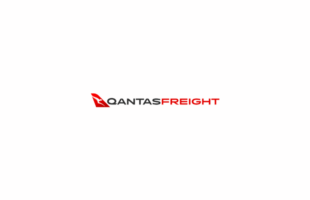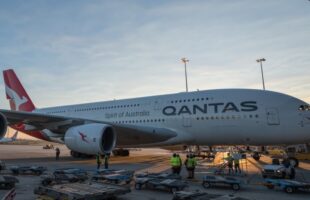
Sydney Airport (also known as Kingsford Smith International Airport) is both the major passenger airport serving Sydney, the main hub for Qantas and Australia’s keycargo gateway.
The airport – managed by Sydney Airport Corporation Limited (SACL) – also has the honour of being one of the oldest continually operated airports in the world and the busiest airport in Australia, handling 31.9 million passengers and 290,346 aircraft movements in 2007. It was the 28th busiest airport in the world in 2003, but has not been in the top 30 since then.
Cargo movements have also been steadily rising over the years and based on average airport-wide productivity of 10 tonnes per square metre per annum, the capacity of the existing on-airport facilities is around 450,000 to 500,000 tonnes per annum for international freight and 80,000 tonnes per annum for domestic freight.
“In order to meet the capacity shortfall, the airport’s plan is to build an aviation logistics precinct in the northern part of the airport to provide new or expanded freight facilities as well as bypass and staging facilities to enable efficienttransfer of freight between the airfield and off -airport operations,” according tothe airport’s Master Plan report.
This northern area development was triggered off by a number of airfreight handling operators locating terminals off-airport in this area to meet the projected increase in freight volumes.
In the medium term, freight is expected to be handled from a number of the present on-airport terminals. With the International Passenger Terminal’s expansion to the north, plans are afoot to develop part of the current international freight terminal site for interim use as a freight bypass and staging facility pending longer term development plans.
In the longer term, areas zoned for Aviation Support and Airport Logistics are available for the development of freight and freight support facilities on-airport. The Master Plan proposes direct landside and airside access to the logistics areas.
Also, on-airport freight bypass and staging facilities are proposed to be established within the airport logistics precinct on the northern boundary of the airport to support off airport operators. These facilities would be located between the International and Domestic Precincts and could also be supported by some smaller satellite facilities within the main terminal precincts for productssuch as time sensitive express freight.

Second airport plan
In order to alleviate Sydney airport’s near term capacity problem, a second airport proposal has met substantial opposition, and the federal Government has been warned it could damage Sydney’s status as an international destination if it attempts to further restrict operations at the nation’s biggest airport or moves too hastily to build a second airport.
The Board of Airline Representatives of Australia (BARA), which represents international and major domestic carriers, labelled Kingsford Smith Airport as “arguably, Australia’s single most important piece of infrastructure’’ and added that existing restrictions at Sydney Airport already impeded both capacity and efficiency and “should not go further”.
The airline umbrella group also said any attempt to force airlines to a second Sydney airport would damage Australia’s biggest city as a business capital.
Almost half of all scheduled flights in Australia land or take off at Kingsford Smith, which has kept the issue of a second Sydney airport on the agenda since 1964. As a tentative first step, the government has bought most of the land needed for a second airport, at Badgery’s Creek, just west of Sydney. To be accessed by the Westlink M7 motorway, there are currently three proposals for the layout of the airport, featuring different arrangement of terminals in the centre of the proposed three runways.
A second airport rose again in 2008 when the Rudd Federal Government was elected. Convinced capacity at the current airport will be exhausted it began a search for a new site. It is believed various options, including a freight-only airportoperation will be considered.
Airport throughput
Sydney Airport expects its freight throughput to almost double over the next 20 years. The airport projected a significant growth in its cargo handling activities, with total freight forecast to grow from 471,000 tonnes in 2007 to 1.07 million tonnes in 2029. Of the 2029 tonnage, international and domestic freight tonnages (including mail) will make up 910,000 and 167,000 tonnes respectively excluding transhipment.
Dedicated freight aircraft movements are also expected to jump by almost 40 percent over the next 20 years to 10,400. Over 80 per cent of freight is carried in the belly holds of passenger aircraft with the remainder transported by dedicated freighters.
Sydney Airport handles about 50 per cent of Australia’s international airfreighttraffic and 30 per cent of domestic volumes. As an international hub, Sydneytransships freight throughout the countrythrough domestic routes, which represents27 per cent of overall tonnage.
Australia’s exports comprises fresh, chilled or frozen perishables such as meat, seafood, fruit, vegetables, flowers, livestock and manufactured goods. International imports are typically high value manufactured products such as computer and car parts. In addition, mail is also an important segment of the international business. Express and parcel services form a large component of the domestic and intrastate airfreight business.

Existing facilities
Sydney airport has seven cargo terminals controlled and operated by five main cargo terminal operators (CTO) with on-airport facilities. The CTOs provide a wide range of services, including some that overlap and others that vary. Essentially some CTOs operate in discrete markets.
Some offer the full range of services including airside handling, storage, packing and unpacking, while others subcontract or outsource various parts of the logistics chain to others. Some operate as common carriers for parcel type freight where others concentrate on preloaded aircraft container from known shippers.
Sydney airport handles airlines dealing with international, domestic and intrastate airfreight, and also serves dedicated freighters. A small number of dedicated domestic freight operations take place during the curfew period using approved aircraft types.
Freight aircraft parking
During off peak periods, international freight aircraft park on various apron areas which also serve passenger aircraft. The main areas used are adjacent to the international freight facilities and immediately west of the Northern Pond area adjacent to the Qantas Jet Base. Other freight aircraft are also parked in the domestic precinct and small overnight freight aircraft operations are facilitated in the nearby area.
On- & off-airport freight activities
A number of passenger airlines fly dedicated freighter aircraft to Sydney. An existing common user freight bypass facility is located in the International Precinct. Livestock handling facilities are provided at Sydney Airport in accordance with Australia Quarantine Inspection Service (AQIS) requirements in both the International and Domestic precincts.
However, off -site, there are around 130 forwarders and integrators located within a five kilometre radius of Sydney Airport. These operations range in scale, complexity and degree of service from major operations to small owner-operatorsoffering very basic services.









